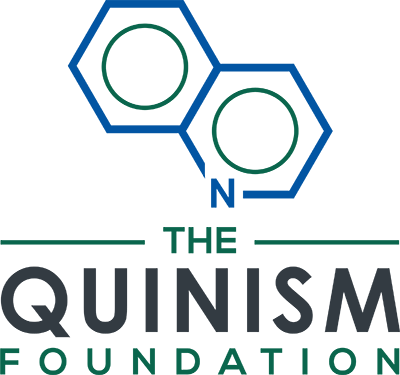The Quinism Foundation Urges Caution in the Use of Tafenoquine (Krintafel®) for the Prevention of Relapse of P. vivax Malaria
The Foundation has Shared Its Concerns for the Safety of the Newly-Approved Drug with the Bill & Melinda Gates Foundation and Medicines for Malaria Venture
WHITE RIVER JUNCTIOON, VERMONT (PRWEB) JULY 24, 2018
The Quinism Foundation has sent correspondence to Dr. Susan Desmond-Hellman, Chief Executive Officer, Bill & Melinda Gates Foundation, and Dr. David Reddy, Chief Executive Officer, Medicines for Malaria Venture, expressing concern for the safety of the quinoline drug tafenoquine (to be marketed by GlaxoSmithKline as Krintafel®), which was recently approved by the U.S. Food and Drug Administration (FDA) for the indication of prevention of relapse of P. vivax malaria under New Drug Application (NDA) 210795.
The Quinism Foundation has asked these organizations, who supported the development of tafenoquine, to join the foundation in urging GlaxoSmithKline and FDA to develop a robust Risk Evaluation and Mitigation Strategies (REMS) program for the drug, to include a boxed warning, restricted distribution, and Phase 4 study commitment, including definitive neurotoxicity testing of tafenoquine in an appropriate primate model.
“Tafenoquine is a member of a class of drug known as 8-aminoquinolines found during World War II-era studies to be uniformly neurotoxic,” said Remington Nevin, MD, MPH, DrPH, executive director of The Quinism Foundation. “A leading researcher involved in testing of this class of drug in rhesus monkeys has noted ‘all of nearly one hundred and forty 8-aminoquinolines examined… produce rather remarkable and highly specific lesions in the central nervous system [CNS].’” [1]
“Publicly-available data support a conclusion that tafenoquine shares the liability to CNS neurotoxicity of related 8-aminoquinolines,” said Dr. Nevin, “and thus that the drug can cause permanent adverse effects that reflect the localization of this neurotoxic injury. For example, gastrointestinal adverse effects from tafenoquine, including nausea and abdominal pain, are fully consistent with evidence of CNS neurotoxicity to the dorsal motor nucleus of the vagus caused by the related 8-aminoquinoline pentaquine observed when this drug was tested in rhesus monkeys.” [2,3]
“Tafenoquine has itself been shown to be neurotoxic in vitro and to be more neurotoxic than mefloquine,” said Dr. Nevin. [4] “Publicly-available preclinical in vivo neurotoxicity data on tafenoquine is limited to that collected in a rat model — a model well-described in the literature as insufficient to rule out neurohistopathologically-significant CNS neurotoxicity observed in primates caused by other members of the 8-aminoquinoline class.” [5,6]
In its correspondence to the Bill & Melinda Gates Foundation and Medicines for Malaria Venture, Dr. Nevin noted The Quinism Foundation’s belief that FDA had failed to adequately consider “critical safety concerns,” which The Quinism Foundation raised at the July 12, 2018 Open Public Hearing of the Antimicrobial Drugs Advisory Committee (AMDAC) meeting, and which were discussed in detail in an accompanying report submitted for consideration by the FDA. This report included recommendations to address certain of the foundation’s safety concerns in the event the drug was nonetheless approved.
“The Quinism Foundation recommends a boxed warning advising of CNS neurotoxicity as a class effect of the 8-aminoquinolines, and warning of the potential for permanent adverse effects. The foundation recommends that gastrointestinal symptoms, to include nausea and abdominal pain, as well as neurologic and psychiatric symptoms, be considered prodromal and a contraindication to further use of the drug. The foundation also recommends limiting distribution of the drug to preclude export and systematic international use, until such time as sufficient post-marketing experience is obtained with the drug domestically. The foundation also recommends requiring the sponsor to conduct, at a minimum, definitive neurotoxicity testing of tafenoquine in an appropriate primate model, according to methods developed for comparable 8-aminoquinolines, and utilizing previously investigated 8-aminoquinolines as positive controls,” said Dr. Nevin.
“We ask your organization to carefully consider these recommendations and to join us in urging GlaxoSmithKline and FDA to develop a robust Risk Evaluation and Mitigation Strategies (REMS) program for the drug,” wrote Dr. Nevin in his correspondence to each organization.
The Quinism Foundation also opposes, on similar safety grounds, the related tafenoquine NDA 210607 for the indication of prevention of malaria, sponsored by 60 Degrees Pharmaceuticals, LLC. The foundation has submitted a report to FDA and will be presenting its concerns and recommendations at the Open Public Hearing of the July 26, 2018 AMDAC meeting at which this NDA will be considered. The Quinism Foundation is recommending a similar REMS, to including a modified dosing regimen, should FDA choose to approve this NDA.
“The foundation recommends that the approved dosing indication for tafenoquine prophylaxis be modified to include an initial safety assessment period of between 3 – 4 weeks, with the dosing regimen modified during the period to take advantage of the 100 milligram formulation of the tablet,” said Dr. Nevin. “A modified dosing regimen of 100 milligrams twice weekly for 3 – 4 weeks prior to travel would permit a more gradual introduction of the drug, as has been previously suggested to improve the safety of the use of mefloquine, such that prodromal symptoms, such as gastrointestinal symptoms, insomnia, abnormal dreams or nightmares, anxiety, depression, restlessness, and confusion could be identified, such that an alternative drug could be substituted should these occur, prior to the traveler departing to areas that may lack convenient access to reliable medical care and alternative drug supplies.” [7]
About The Quinism Foundation
The Quinism Foundation, founded in January 2018, in White River Junction, Vermont, promotes and supports education and research on quinism, the family of medical disorders caused by poisoning by quinoline drugs, including mefloquine and tafenoquine.
Executive director Dr. Nevin is a board-certified occupational medicine and preventive medicine physician and former U.S. Army medical officer and epidemiologist. He is author of more than 30 scientific publications on malaria and the quinoline antimalarials, including “Unexpected pharmacological and toxicological effects of tafenoquine”, published in the journal Occupational Medicine. [8]
1. Schmidt IG, Schmidt LH. Neurotoxicity of the 8-aminoquinolines. III. The effects of pentaquine, isopentaquine, primaquine, and pamaquine on the central nervous system of the rhesus monkey. Journal of neuropathology and experimental neurology. 1951;10(3):231-256.
2. Ibid.
3. Craige B, Eichelberger L, Jones R, Alving A, Pullman TN, Whorton CM. The Toxicity of Large Doses of Pentaquine (SN-13,276), A New Antimalarial Drug. The Journal of clinical investigation. 1948;27(3 Pt 2):17-24.
4. Agboruche RL. 529.3 In-Vitro Toxicity Assessment of Antimalarial Drug Toxicity on Cultured Embryonic Rat Neurons, Macrophage (RAW 264.7), and Kidney Cells (VERO-CCl-81). FASEB Journal. 2009;23(1 Meeting Abstract Supplement):529.3.
5. Schmidt I, Schmidt L. Neurotoxicity of the 8-aminoquinolines. II. Reactions of various experimental animals to plasmocid. The Journal of comparative neurology. 1949;91(3):337-67
6. Lee CC, Kinter LD, Heiffer MH. Subacute toxicity of primaquine in dogs, monkeys, and rats. Bulletin of the World Health Organization. 1981;59(3):439-448.
7. Nevin, RL. Rational Risk-Benefit Decision-Making in the Setting of Military Mefloquine Policy. Journal of Parasitology Research, 2015, 260106.
8. Nevin RL. Unexpected pharmacological and toxicological effects of tafenoquine. Occupational Medicine. 2015;65(5):417-417.

